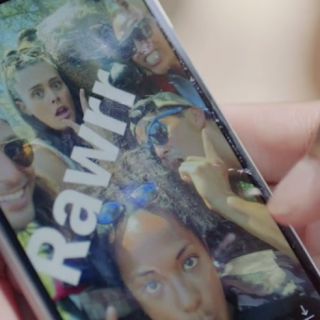In June this year, Instagram reached 500 million registered users (of which an incredible 300 million use the platform every single day). That’s more users than Twitter, Snapchat – even Pokémon GO! So why has the wildly popular photo-sharing platform taken a huge risk to its momentum (and its credibility) by launching ‘Stories’, an ephemeral sharing function which appears to be straight out of Snapchat’s playbook?
How do ‘Stories’ work, and what makes them different from Snapchat?
In a nutshell, Instagram users can now shoot photos or short videos, add text, emojis or a drawing, and then share them to their ‘story’ which lasts for 24 hours. So far, it sounds a lot like Snapchat. There are some key differences, however, with Instagram’s version: ‘Stories’ can be viewed by anyone if the publisher has public profile (just tap their profile photo to view), and users can hide a photo from being shown to specific people.

Unlike Snapchat, there are no geofilters or fun augmented-reality filters, so you’ll still have to tap on the ghost icon to access the ‘dog selfie’ filter.
Why did Instagram launch ‘Stories’?
Despite going from strength to strength in recent years, the changing user behaviour of Instagram 500 million-strong base had becoming a cause for alarm. Between 2013 and 2015, the average number of Instagram posts per user declined. As the platform matured, it became a place to curate the most photogenic moments in life, but not necessarily every moment.
Snapchat had appeared to have cornered the market for quick, spontaneous, ephemeral content that didn’t stay around forever, and Instagram will now hope to migrate some of those users sharing more of those everyday moments on its platform.
What are Instagram’s plans for ‘Stories’?
The single biggest advantage that Instagram holds on day one of launching ‘Stories’ over Snapchat is mentioned at the top of this article: the audience is already on Instagram. Not only are more people using Instagram, the platform also has a more mature audience than Snapchat. While millennials navigate Snapchat’s user interface with ease, it’s much less straightforward for not-so digitally native users.
In using an existing template, Instagram have had the chance to focus on ease-of-use. Whereas Snapchat’s UI relies on multi-directional swipe actions, Instagram Stories live at the top of every user’s feed with an icon in the corner to share a new story. There’s even an easy way of adding a picture or video from the camera roll.

The clear UI opens up the ephemeral sharing phenomenon to users who love Instagram but had been cautious about Snapchat – and the great news for brands is that they can leverage the new feature using their existing audience without needing to build a new audience on a new platform. Content wise, there’s now a designated place to share behind-the-scenes posts, user-generated content and influencer takeovers – all with a huge level of organic attention.
Snapchat, for its part, will pivot to respond to the launch of Instagram Stories. It remains to be seen exactly how this materialises, but key differentiators between the two products – for example, 8 in 10 13-33 year-olds want more privacy controls in their sharing (Snapchat is a closed network) – will lead to Snapchat loyalists staying put.
The launch of ‘Stories’ on Instagram demonstrates among the biggest platforms: each starts life with its own niche product to draw new users, but over time most homogenise the same basic features in order to retain their audience or monetise with brands. Despite the indignation over Instagram copying Snapchat today, it’s unlikely that in 2 years’ time the audience will remember how Instagram Stories started, especially if – as expected – it becomes a roaring success.



